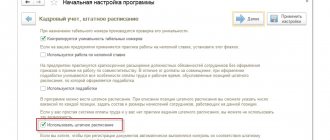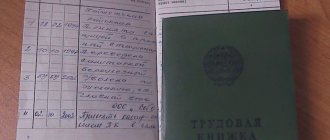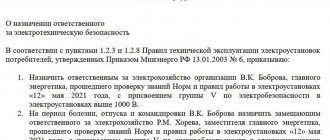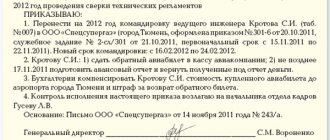In the process of organizing labor, the employer may be forced to issue an order to amend an order previously approved by him. Or another leader who was his predecessor.
The reasons for making changes to the order can be objective (changes in legislation, accounting policies, etc.) or subjective (personal intention of the manager). For example, in an order to send several employees on a business trip, one employee is replaced. If the reasons are subjective, it is first worth studying the legislation of the Russian Federation in the scope of the order. And after making sure that workers do not need to protect their labor rights in this case, issue an order to amend the order.
order:
Order to amend the order
Why are changes made to documents?
Typically, orders issued at an enterprise determine the procedure of action necessary under the specified conditions, or establish certain facts.
Moreover, such orders can be either simple, which determine the employer’s relationship with a specific employee, or complex, which determines the interaction of many employees with each other and with the enterprise. The last type of orders include:
- An order to assign the duties of an employee on vacation to other employees;
- Order to conduct an inventory;
- Order on document flow between departments;
- Order to send employees for a medical examination
- and others.
Moreover, due to changed surrounding circumstances, such an order may partially lose its significance or legal force.
However, the general essence of the document remains unchanged. In this case, an order for changes in another order is issued. In the case where, due to changes, the validity of the document is lost entirely, it is best to issue an order to cancel the order.
Important! The law establishes that it is prohibited to enter any changes or make corrections into the text of an already valid document. To make any changes to it, even the most insignificant ones at first glance, you need to issue an appropriate order.
The implementation of one of the following actions is considered as making changes to the administrative document:
- Replacement of words, sentences in any part of the order or appendices to it;
- Exclusion of words or sentences from any part of the order or appendices thereto;
- Exclusion or definition as invalid of any part of the document;
- Addition of any part of the order with words or sentences, introduction of new parts into the document;
- Presentation of the parts available in the order in the new edition.
Rules for registering order details
The rules for preparing document details are established by GOST R 6.30-2003 “Unified documentation systems. Unified system of organizational and administrative documentation. Requirements for paperwork”, and are also set out in Appendix No. 11 to clause 3.3.2 of the Methodological recommendations for the development of instructions for office work in federal executive authorities, approved by Order No. 76 of Rosarkhiv dated December 23, 2009 (hereinafter referred to as the Methodological Recommendations). The composition and rules for preparing the details of orders are described in detail in Appendix No. 15 to clause 3.3.5.2 of the Methodological Recommendations.
Let's consider the composition and basic rules for preparing the order details, based on the requirements of GOST R 6.30-2003, Methodological Recommendations and many years of office work practice.
Name of the organization - the author of the document . According to Fig. B.5 of Appendix B to GOST R 6.30-2003 and Appendix No. 15 to clause 3.3.5.2 of the Methodological Recommendations on order forms the full and abbreviated name of the organization - the author of the document is indicated. We believe that in organizations that are not related to executive authorities, taking into account the fact that the order is an internal or , if available, abbreviated name of the organization that authored the document can be indicated If the organization considers it necessary, both options can be indicated on the order forms. The abbreviated name of the organization is indicated in parentheses below the full name.
The name of the organization that authored the document may be in bold font.
Note : Both the full and abbreviated name of the organization are indicated on the general form of the organization, as well as on the letterhead.
The name of the type of document is usually written in capital letters: ORDER or DISTRICT.
The name of the document type may be in bold.
Restrictive marks for the date of the document and its registration number . The date of the order is the date the document is signed ; on the same day the order must be registered. The date of the order is usually issued in digital format, for example: 06/05/2012. Indicating zeros in the example above is mandatory to protect against falsification.
According to clause 3.12 of GOST R 6.30-2003, the registration number of a document consists of its serial number in the registration journal and can be supplemented, at the discretion of the organization, with a case index according to the nomenclature of cases, information about the correspondent, executors, etc. Other requirements for the formation of registration numbers of documents are current legislation does not contain.
In accordance with the registration system adopted by the organization, the serial number of the order can also be supplemented with letter indices. With a small volume of document flow, orders on core activities and on administrative and economic issues, as a rule, do not need additional indexing, and the letter index “l/s” or “k” is added to the numbers of orders for personnel, at the choice of the organization. You can use both indexes: for orders with a storage period of 75 years - the index “l/s”, and for orders with a 5-year storage period - the index “k”.
In organizations with a large volume of document flow, letter indices may be used to indicate the contents of the order and facilitate the identification of documents.
In orders for core activities, these can be the indexes “f” (financing issues), “shr” (approval of the staffing table and making changes and additions to it), “la” (approval of local regulations, making changes to them, their cancellation) and etc.
In orders on administrative and economic issues, you can use indexes such as “p” (repair, reconstruction), “tr” (transport services), “z” (purchase of furniture, stationery, etc.), etc.
In orders for personnel, the indices “km” (secondment), “y” (dismissal), “pr” (hiring and relocation), “oo” (“paid leave” - provision of annual paid leave), “bo” are used (“without pay” – provision of leaves without pay), etc.
The place of preparation or publication of the document , according to clause 3.14 of GOST R 6.30-2003, is indicated if it is difficult to determine it using the details “Name of the organization” and “Reference data about the organization”. The place of compilation or publication is indicated taking into account the accepted administrative-territorial division, using only generally accepted abbreviations.
Despite the fact that reference information about the organization is not indicated on the order forms, and it is not always possible to determine its location from the name of the organization, we believe that this detail may not be indicated in the internal documents of the organization. However, if there are separate structural units located in other localities, the details should be formalized.
If an organization is registered in one city, but carries out its activities and issues administrative documents in another, the details of the order “Place of preparation or publication of the document” indicate the actual place of publication of the document.
The title to the text of the order includes a brief content of the document, is formulated in the prepositional case and begins with the preposition “O” or “About”, for example:
- on the appointment of a person responsible for organizing the processing of personal data (in the order for the main activity);
- on the assignment of vehicles to structural divisions of the organization (in the order on administrative and economic issues);
- on the cancellation of an employment contract (in the order for personnel).
On corner order forms with a flag arrangement of the details, the title to the text is printed directly from the left margin of the document within the boundaries of the zone reserved for the details of the header part of the document, with the centered location of the details - in the center of this zone; if orders are issued on longitudinal forms with the details located centrally, the title to the text is printed in the center of the working line.
Document text . The text of the order may consist of two parts – a statement (preamble) and an administrative one, separated by the administrative word “I order”. The ascertaining part may be missing, and then the order begins with an administrative word.
According to Appendix No. 15 to clause 3.3.5.2 of the Methodological Recommendations, the stating part briefly outlines the goals and objectives, facts and events that served as the basis for issuing the order. It may begin with the words “for the purpose”, “in pursuance”, etc. If the order is issued on the basis of another document, then the ascertaining part indicates the name of this document, the name of the body that issued the document, the date, registration number and title to the text.
If in orders for main activities the stating part is found quite often, then in orders for personnel it is, as a rule, absent. However, in some orders on personnel it is recommended to formalize it: for example, in the stating part of the order on the application of a disciplinary sanction, provide the date and detailed description of the disciplinary offense or violation of official (professional) duties committed by the employee, as well as detail the results of the investigation into this fact.
How to formalize the administrative word “I order” must be decided by the organization itself when designing the order form:
- as a continuation of the last paragraph of the stating part or on a separate line;
- if on a separate line, then directly from the left margin or from the red line;
- capital letters or lowercase letters in space.
The administrative part of the order lists instructions (tasks) indicating executors and deadlines for execution.
The administrative part can be divided into paragraphs and subparagraphs, which are numbered in Arabic numerals . Structural units or specific employees of the organization are indicated as performers.
Note! Making changes to the signed order, instruction, as well as to the agreed draft document is not allowed.
If a particular paragraph of the order is addressed to the heads of all structural divisions of the organization, you can use a generalized wording without indicating specific positions and names, for example:
2. The heads of the Company's structural divisions must submit to the HR department, by December 10, 2012, completed employee survey forms regarding the time of vacation provision in 2013 in accordance with the Appendix.
The last paragraph of the administrative part may indicate the position, surname and initials of the employee who is entrusted with monitoring the execution of the order. If the head of the organization leaves control over the execution of the order to himself, this should not be indicated in the order. The order should not include a clause about the need to bring the order to the attention of certain employees; for this purpose, familiarization visas are issued - on the front or, if there is not enough space, on the reverse side of the last sheet of the order or on a separate familiarization sheet. An acquaintance visa for one employee can be issued according to the following model:
Reviewed by: ______________________ « ____ » _________________________ 20 __ signature (legible) month in words
In the unified forms of orders for personnel, approved by Resolution of the State Statistics Committee of Russia dated January 5, 2004 No. 1, the familiarization visa has a similar structure:
The employee has read the order (instruction): _______________________ « ____ » ______________________ 20 __ signature (legible) month in words
If you need to familiarize several people with the order, you can use a universal form to issue study visas, which allows you to reduce or increase the number of lines:
The following have been familiarized with the order:
_________________________________ _______________________ « ____ » ___________________ 20 __
_________________________________ _______________________ « ____ » ___________________ 20 __
________________________ _______________________ « ____ » ___________________ 20 __ surnames, initials signature (legible) month in words
In the unified forms of multi-subject orders for personnel, a column is provided for familiarization of workers with the order, the heading of which states: “The employee has become familiar with the order (instruction). Personal signature. Date of".
Marking the presence of the application . Clause 3.21 of GOST R 6.30-2003 deals with the preparation of this detail in letters, and with regard to attachments to administrative documents, it is only said that in the attachment to the administrative document, on its first sheet in the upper right corner they write “Appendix No.” indicating the name of the administrative document, its date and registration number. The following is an example of such an inscription:
Appendix No. 2
to the order of Rosarkhiv
dated 06/05/2003 No. 319
It is allowed to print the expression “APPENDIX No.” in capital letters, and also to center this expression, the name of the document, its date and registration number relative to the longest line.
The Methodological Recommendations also say nothing about making a note about the presence of an application in orders and instructions. Appendix No. 11 to clause 3.3.2 of the Methodological Recommendations provides for the use of a mark on the attachment when preparing attachments to orders and instructions, but by a mark on the attachment we mean a mark that is placed in the upper right corner on the attachment itself to the administrative document (see. higher).
This Appendix also provides explanations that supplement and clarify the rules for preparing annexes to orders given in GOST R 6.30-2003. For example, it is clarified that a note about the attachment is placed on the first sheet of the attachment for reference to orders, instructions, rules, instructions, regulations, plans, programs, agreements and other documents. If the attachment to a document (for example, an order) is an approved document (regulations, rules, instructions, regulations, etc.), a mark about the attachment is placed in the upper right corner, and below is the approval stamp of the document, for example:
Appendix No. 1
Approved
by order of Rosarkhiv
dated 12.11.2009 No. 125
The absence in GOST R 6.30-2003 and Methodological Recommendations of a mention of the mark on the presence of an application in administrative documents allows us to draw the following conclusion: this detail is not formalized in administrative documents, and links to applications are given directly in those paragraphs of the order to which these applications relate. For example:
I order:
1. Until January 1, 2013, the logistics department will purchase office furniture for the office according to the list given in Appendix No. 1 to the order.
Responsible – head of the logistics department N.S. Sharov.
[…]
The signature consists of three elements: the name of the position, the personal signature and its decoding. The transcript of the signature consists of the initials and the surname separated from them by one space, for example: N.G. Fedorov.
On order forms, you can pre-provide a form for this detail, for example:
____________________________ ____________________ ___________________________
job title signature signature description
The detail “Note about the performer” is issued in orders if the organization considers it necessary. The details include the initials, surname and telephone number of the executor of the document. According to clause 3.27 of GOST R 6.30-2003, a mark about the executor is placed on the front or back side of the last sheet of the order in the lower left corner directly from the left margin, for example:
NOT. Sharapova 8-495-123-45-67
On unified forms of orders for personnel, a mark about the executor is not provided by the State Statistics Committee of Russia, but it can be added, of course, if the organization considers it necessary. According to the Procedure for the Application of Unified Forms of Primary Accounting Documentation, approved by Resolution of the State Statistics Committee of Russia dated March 24, 1999 No. 20 (hereinafter referred to as the Procedure for the Application of Unified Forms), the changes made must be formalized by the relevant organizational and administrative document of the organization.
Font and paragraph parameters used when creating orders . The organization independently determines:
- font type used when placing orders;
- font size for individual order details;
- the ability to use bold style to highlight individual details;
- size of line spacing;
- how paragraphs are aligned (justified or left);
- the need and size of additional spacing between paragraphs.
When preparing organizational and administrative documents, the font Times New Roman, Arial or another one of the organization’s choice is usually used.
According to established practice, when typing the text of an order, its heading, job title and transcript of the signature in the “Signature” attribute, the font size is set to 12 pt, but if necessary, it can be reduced to 11 pt or increased to 14 pt.
The name of the organization - the author of the document, the name of the type of document can be highlighted in a font 2-3 pt larger than the font of the document text.
The size of the line spacing is set in the range from single to double. Single spacing usually includes a title for the text and a note about the artist. The text of the order is usually printed at one and a half intervals. The same line spacing can be set for all order details. If necessary, you can use intermediate (fractional) line spacing values, for example, set it to 1.25.
The requirements of GOST R 6.30-2003 for the format and rules for writing dates apply only to the “Document Date” attribute, writing the date in the text of the document, incl. and is not regulated in orders or regulatory documents. The date in the text can be written in both digital and verbal-digital format, for example: 12/06/2012 or December 6, 2012, and instead of “year” The word “year” may be written; the zero before the number “6” is not required.
The pages of orders are numbered in accordance with the rules set out in clause 4.9 of GOST R 6.30-2003: when preparing documents on two or more pages, the second and subsequent pages are numbered (the first page is not numbered), page numbers are placed in the middle of the top margin of the sheet.
The organization has the right to establish its own rules for typing text and other details of orders and enshrine them in the instructions for office work or other local regulations.
What orders can be changed
The law does not contain direct prohibitions on changing any orders. Thus, any administrative documents in which there are inaccuracies, or due to changes in surrounding circumstances, any part has become irrelevant, must be subject to changes.
These may be the following groups of orders:
- Regarding the working conditions of workers;
- Regarding local regulations issued at the enterprise;
- On the appointment of responsible persons for any actions;
- Regulatory relations between employees and employers;
- Due to personnel changes.
You might be interested in:
Business trip order: how to write it correctly in [year] year - sample and form
You can also make changes to any part of the order itself - you can edit the basis of the document, the main administrative part and the conclusion.
The text describes the options for making changes.
Making changes means:
- replace - words, numbers in the title, text or appendices;
- delete - remove words, numbers, sentences from the title, text or appendices, invalidate (exclude) clauses, paragraphs, etc.;
- supplement - with words, numbers, sentences, the title, structural elements of the text (points, paragraphs, etc.) or applications.
In the ascertaining part, the rationale for the changes being made is provided, and references are made to legal acts, significant facts or events. For example, “in order to bring the local regulatory framework into compliance with current legislation...”. The administrative document begins with the words “Introduce to...”. For example, “Introduce the following changes to the HR Director’s order dated August 20, 2021 No. 65-UP “On approval of the Regulations on bonuses for employees of the sales department”:..”.
What are the grounds for making changes?
In the event of a change in external or internal factors in the work of a business entity, as a result of which any part of the current order no longer corresponds to reality, the responsible person must draw up an official or memo addressed to his immediate superior or directly to the head of the company.
It must indicate the factor that had its impact, as well as the recommended action. For example, in connection with the dismissal of an employee or going on vacation (based on a vacation order), the responsibilities assigned to him must be transferred to another employee. Sometimes changes to an order are requested due to an error in the original document.
Attention! If changes are requested due to some events in the employee’s life (for example, the last name was changed due to marriage), then a copy of the supporting document must also be attached.
Further, when issuing an order to make changes, its text indicates the reason-justification that prompted its release (for example, in connection with a change of name by an employee), as well as the basis - details of the legislative act, memorandum, data on another document, etc. .
Heading
This part should convey a summary and answer the question “about what?” It is formulated generally with the prepositions “O” or “About” according to the following rules:
- “On making changes to...” - after these words indicate the type of order being adjusted, its date, registration number and title;
- “On recognition as invalid...” or “On recognition as invalid...” - after these words the clause, subclause, paragraph, sentence is listed;
- the necessary structural units of the text (clauses, subclauses, paragraphs) are listed in chronological order;
- the title reflects the main content - there is no need to include information that amendments are being made to any documents.
How to make changes to an order
Registration of changes to the current order occurs in several stages.
First, the responsible person draws up an official or memo stating that, due to changes in some factor, part of the current order has become untrue. The manager reviews the document received by him and makes a decision - to formalize changes to the current order, or, under certain conditions, to cancel it altogether and issue a new order.
In the first case, he instructs the responsible person to prepare the document. It must contain the basis for making changes, as well as a list of necessary amendments, indicating the place in the old order to be corrected, the old and new wording of the text.
The executed order, like any other order, is signed by the head of the company. Next, the document must be registered in a special order book. The date and number of the order and its brief content are entered there.
Important! If the new order mentions any employees, then they must be provided with a document for review and signature. It must be stored in the archive together with the order to which the new order makes changes.
If changes are made in connection with a change of employee, then he must be given both the text of the original order and the new order for review. In this case, an indication of this action can be placed in a separate paragraph of the new document.
You might be interested in:
Vacation notice: how to compose, how long in advance it is sent and how to familiarize it
An order to change another order must contain the following information:
- reasons and grounds for which changes are required;
- information about the order that is subject to change, namely: date, number, title and link to specific clauses (clause);
- if necessary, the prescribed responsibilities and officials, structural divisions of the organization should be indicated;
- sometimes, if required, they refer to the order that is being canceled or its individual provisions;
- the assignment of responsibility for monitoring the proper execution of the order is indicated if necessary, but is not mandatory.
Below are specific examples for your attention. The first is about how to edit any provision or instruction previously approved by order. From the point of view of office work, it would be correct to change individual points, and not to re-approve the entire document again.
Order to amend an order to approve a document
CLOSED JOINT STOCK COMPANY "ROMASHKA"
(CJSC "Romashka")
How often can you apply
The law does not indicate how many times or how often the orders in force at an enterprise can be changed. Based on this, if necessary, it can be done every week or even every day.
However, it is necessary to understand that frequent changes to the same document are impractical. The responsible employee must constantly spend his time preparing a new version of the order.
If any responsible persons are mentioned in it, then you will need to go around them each time, or invite them to the personnel department so that they familiarize themselves with the new version and sign.
Attention! If it is expected that the number of changes made to an existing order will be significant, it would be most advisable to immediately cancel the existing order and issue a new version that takes into account all the innovations.








